Agnathan VIP, PACAP and their receptors: ancestral origins of today's highly diversified forms
- PMID: 22957100
- PMCID: PMC3434177
- DOI: 10.1371/journal.pone.0044691
Agnathan VIP, PACAP and their receptors: ancestral origins of today's highly diversified forms
Abstract
VIP and PACAP are pleiotropic peptides belonging to the secretin superfamily of brain-gut peptides and interact specifically with three receptors (VPAC(1), PAC(1) and VPAC(2)) from the class II B G protein-coupled receptor family. There is immense interest regarding their molecular evolution which is often described closely alongside gene and/or genome duplications. Despite the wide array of information available in various vertebrates and one invertebrate the tunicate, their evolutionary origins remain unresolved. Through searches of genome databases and molecular cloning techniques, the first lamprey VIP/PACAP ligands and VPAC receptors are identified from the Japanese lamprey. In addition, two VPAC receptors (VPACa/b) are identified from inshore hagfish and ligands predicted for sea lamprey. Phylogenetic analyses group these molecules into their respective PHI/VIP, PRP/PACAP and VPAC receptor families and show they resemble ancestral forms. Japanese lamprey VIP/PACAP peptides synthesized were tested with the hagfish VPAC receptors. hfVPACa transduces signal via both adenylyl cylase and phospholipase C pathways, whilst hfVPACb was only able to transduce through the calcium pathway. In contrast to the widespread distribution of VIP/PACAP ligands and receptors in many species, the agnathan PACAP and VPAC receptors were found almost exclusively in the brain. In situ hybridisation further showed their abundance throughout the brain. The range of VIP/PACAP ligands and receptors found are highly useful, providing a glimpse into the evolutionary events both at the structural and functional levels. Though representative of ancestral forms, the VIP/PACAP ligands in particular have retained high sequence conservation indicating the importance of their functions even early in vertebrate evolution. During these nascent stages, only two VPAC receptors are likely responsible for eliciting functions before evolving later into specific subtypes post-Agnatha. We also propose VIP and PACAP's first functions to predominate in the brain, evolving alongside the central nervous system, subsequently establishing peripheral functions.
Conflict of interest statement
Figures
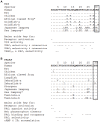
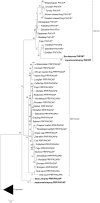
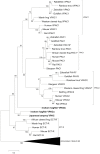
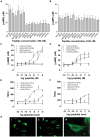

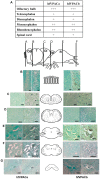
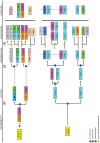
References
-
- Said SI, Mutt V (1970) Polypeptide with broad biological activity: isolation from small intestine. Science 169: 1217–1218. - PubMed
-
- Miyata A, Arimura A, Dahl RR, Minamino N, Uehara A, et al. (1989) Isolation of a novel 38 residue-hypothalamic polypeptide which stimulates adenylate cyclase in pituitary cells. Biochem Biophys Res Commun 164: 567–574. - PubMed
-
- Ishihara T, Shigemoto R, Mori K, Takahashi K, Nagata S (1992) Functional expression and tissue distribution of a novel receptor for vasoactive intestinal polypeptide. Neuron 8: 811–819. - PubMed
-
- Lutz EM, Sheward WJ, West KM, Morrow JA, Fink G, et al. (1993) The VIP2 receptor: molecular characterisation of a cDNA encoding a novel receptor for vasoactive intestinal peptide. FEBS Lett 334: 3–8. - PubMed
-
- Hashimoto H, Ishihara T, Shigemoto R, Mori K, Nagata S (1993) Molecular cloning and tissue distribution of a receptor for pituitary adenylate cyclase-activating polypeptide. Neuron 11: 333–342. - PubMed
Publication types
MeSH terms
Substances
LinkOut - more resources
Full Text Sources
Other Literature Sources
Research Materials

